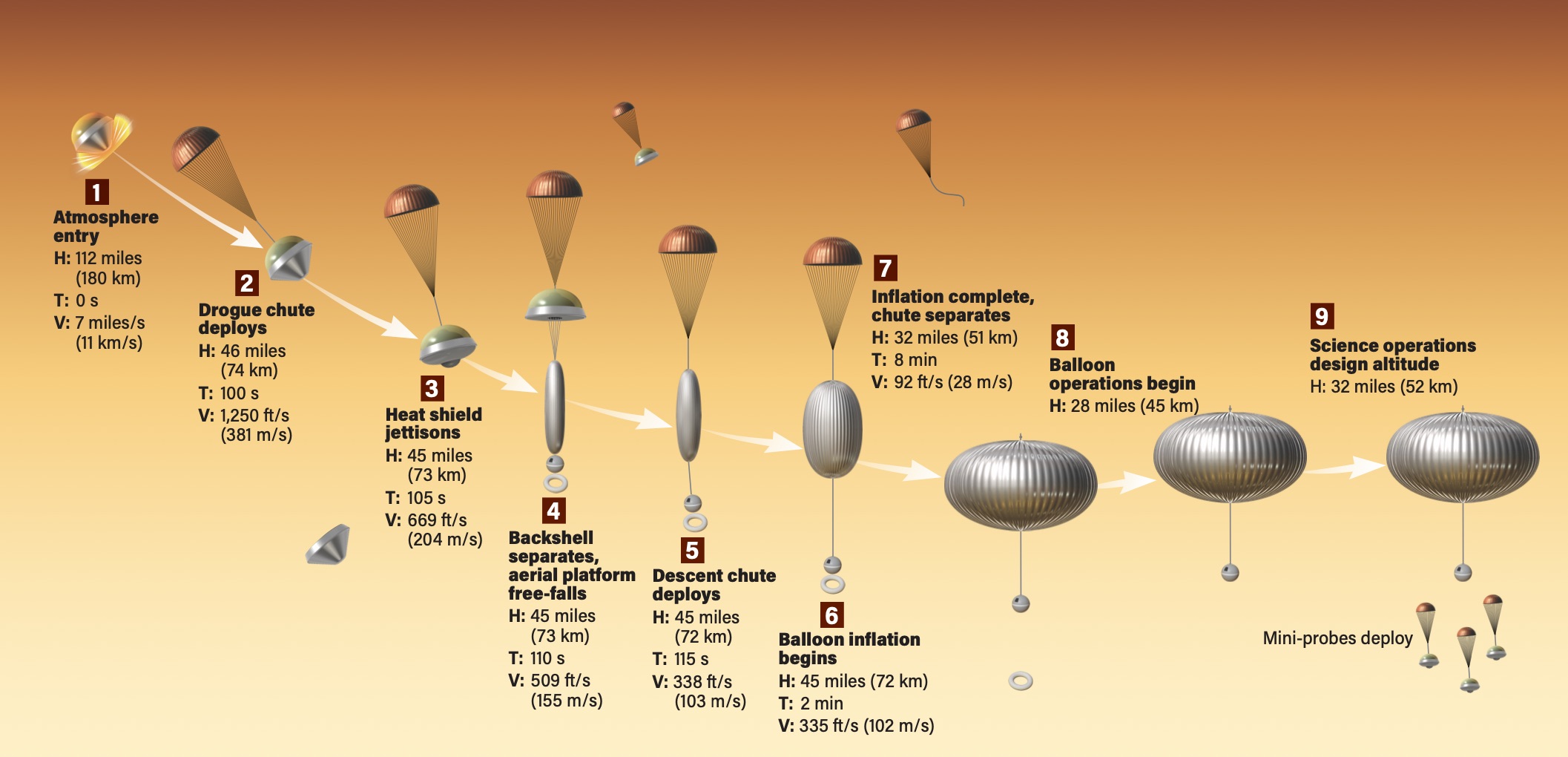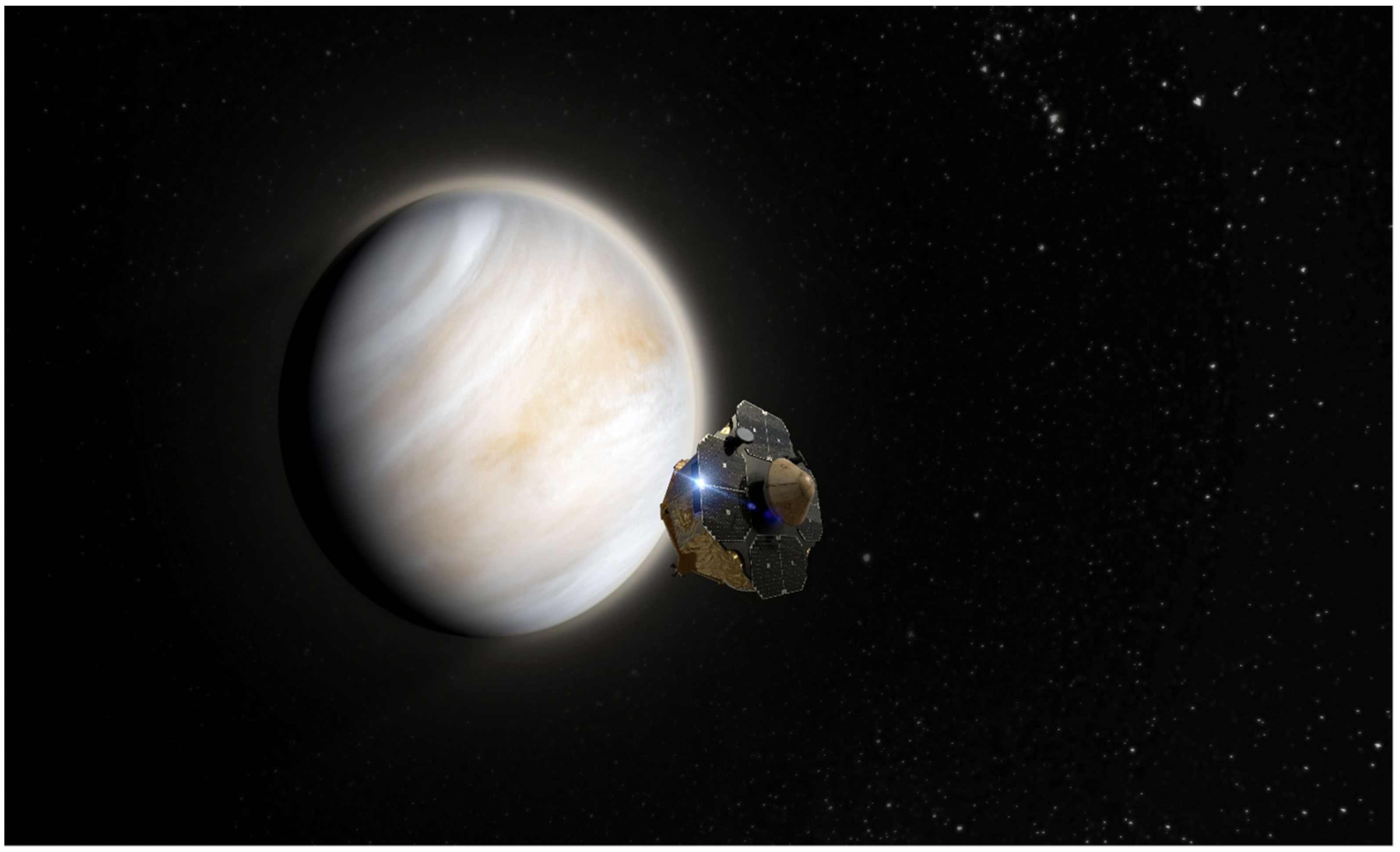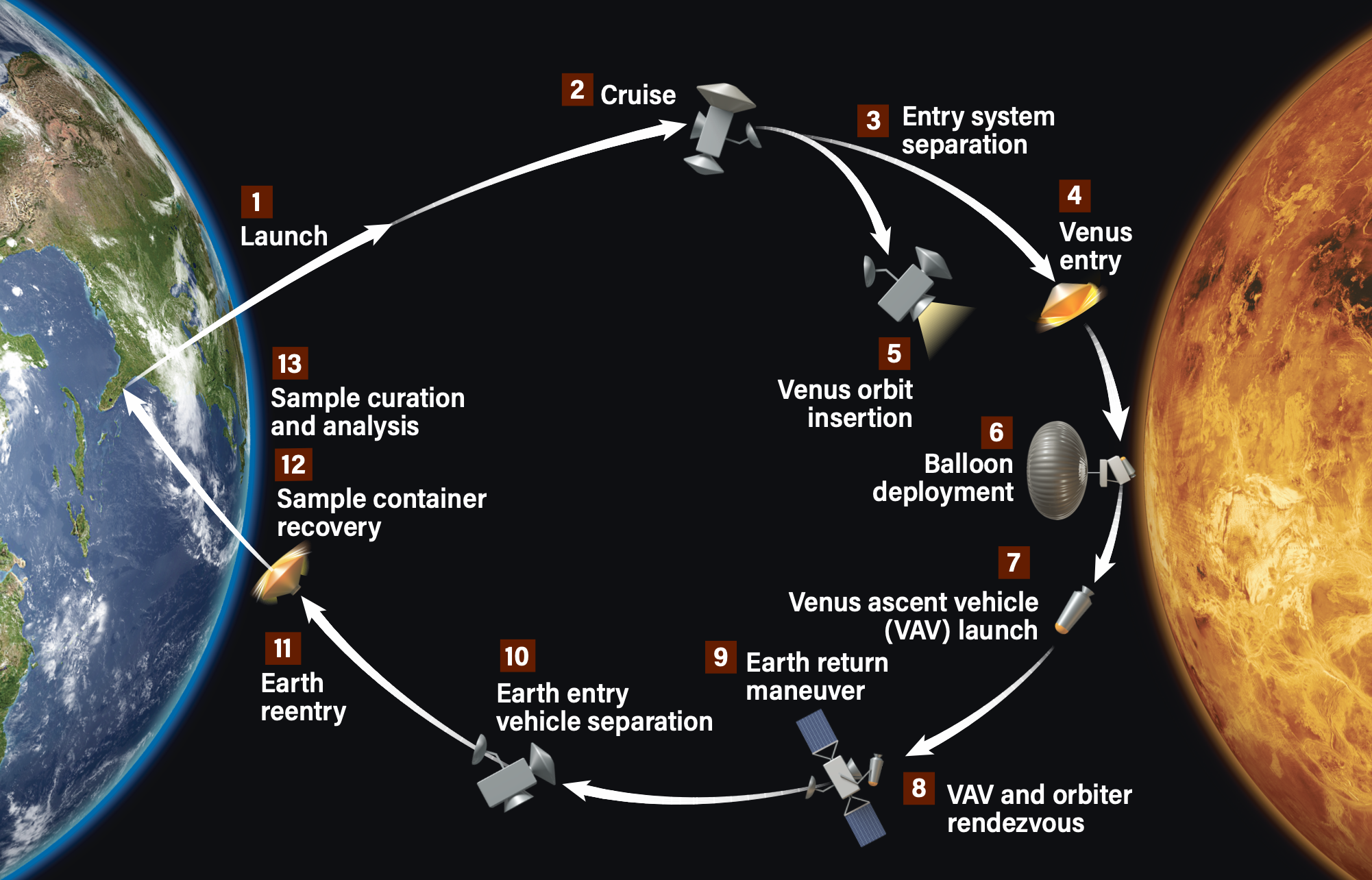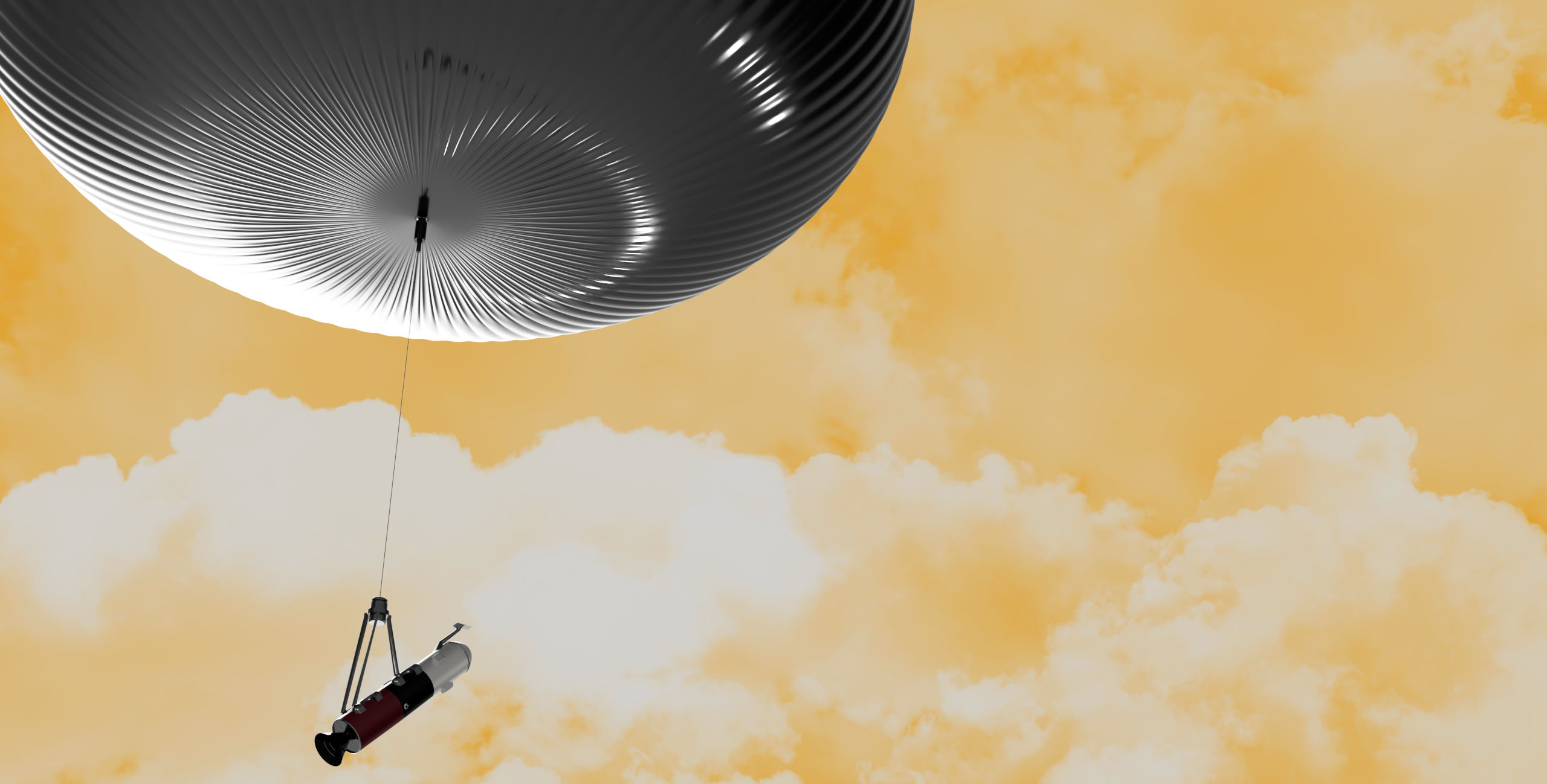
Key Takeaways:
Venus seems like the last place you’d ever think about looking for life. It features searing-hot temperatures; a thick, hazy atmosphere raining droplet of sulfuric acid; and potentially active volcanoes spewing hot lava and corrosive gases. It’s often been compared to visions of hell, a landscape of fire and brimstone.
And yet, scientists have long proposed that regions of Venus’ atmosphere, high above the surface, might provide a habitat for life. These ideas have been greeted skeptically but over the last few years, bits and pieces of evidence have begun to pile up, suggesting there really might be a habitable zone there. More recently, a group of scientists claimed to have detected what may be evidence of living organisms there now, perhaps in the form of highly adapted microbes floating in droplets high in the thick, cloudy air.
The signs of possible life so far have all been indirect and scant, but together add up to a picture that some researchers say merits further investigation. And instead of waiting for politicians and administrators to approve a mission, they have obtained private funding to send a probe to Venus in 2025 — with two more missions in the planning stages.
Hints of life

David Grinspoon, an astrobiologist at the Planetary Science Institute, says he began to wonder about possible life on Venus in the 1990s. “For me, it had to do with the Magellan findings,” he says, referring to the spacecraft that returned reams of radar data and revolutionized our image of the planet. Magellan revealed a young surface that had been drastically reshaped by volcanism. In fact, “there were all kinds of hints that it’s probably currently geologically active,” he says. In May of this year, new evidence from those old radar images showed clear changes in the shape of a volcanic vent. “Seeing this very convincing example of an apparently volcanic feature that changed over such a short timescale really adds substantially to the case that Venus today is quite active,” Grinspoon says.
Magellan data also confirmed the existence of a layer in the clouds that showed “a region that is not only habitable, but has energy sources and nutrients,” Grinspoon says. There have been signs of puzzling chemical anomalies in the atmosphere, he adds, although “none of them are solid enough to be considered evidence for life.” For years, his suggestions of the possibility of life there made him “a bit of a lonely voice in the wilderness,” he says.
Then, in 2020, the idea was thrust into the spotlight when a team of researchers led by Jane Greaves of Cardiff University in Wales reported they had detected phosphine gas in Venus’ clouds. On Earth, phosphine is a byproduct of living organisms, produced by microbes in swamps and inside the guts of animals.
The team explored every mechanism they could think of that is capable of making phosphine, and concluded that none could account for the amounts they reported — except life. “[It] is a gas that doesn’t belong in the context of its environment” on Venus, says Sara Seager, a study co-author and planetary scientist at MIT. “It really shouldn’t be there. It doesn’t appear to be made by any chemical or physical process that we can think of. … It’s only associated with life, or with some other chemistry that we do not currently understand.”
The claim remains controversial. Many scientists question the detection as a weak signal amid a noisy background, or suspect that it may be a different molecule that absorbs at a similar wavelength. Nathalie Cabrol, director of the Carl Sagan Center for the Study of Life in the Universe at the SETI Institute in California, who was not part of the study, notes the detection was a difficult one to make. There were several independent teams that sought to verify the findings “and some of them couldn’t find the phosphine,” she says.
Seager candidly acknowledges the controversy and her colleagues’ skepticism: “It’s still kind of going back and forth, as science should,” she says.

Getting answers
Seager and her colleagues used Earth-based radio telescopes to observe Venus and make their detection. But resolving the questions they’ve raised will probably require a close-up view.
Seager has put together a team of more than a dozen scientists, including Grinspoon. They have done a detailed study that concludes the overall evidence is now suggestive enough, and the possibility of finding alien life in our closest neighbor planet is so important, that it’s time to launch new missions to Venus to answer these questions once and for all.
The group, originally the Venus Life Finder Mission Team and now called Morning Star Missions to Venus, has published several reports outlining the evidence so far, along with the types of instruments that could provide definitive answers about the compounds in the planet’s atmosphere and their origins. They also discuss the missions needed to deliver those instruments to Venus and allow them to survive long enough to return useful data. To that end, Seager says, her team has settled on three mission concepts. Designated the Morning Star Missions, the first is already funded and under construction. It will use a privately developed rocket system from the company Rocket Lab. Set to launch from New Zealand in January 2025, it will take a few months to get to Venus, where it will release an instrument package to plunge through the atmosphere and collect data as it falls.
“This will be the first probe in nearly four decades that goes into the atmosphere” of Venus, Seager says, beating NASA’s DAVINCI mission, scheduled to launch in 2029. “It won’t have a parachute, so it’ll take about an hour before it crash-lands on the surface, and we have five precious minutes [to collect data] in the cloud layers.”

The Rocket Lab Mission to Venus will be the first mission ever developed to search for organic matter in the clouds. Its instrument, the Autofluorescence Nephelometer (AFN), will shine a laser onto cloud particles, causing any complex organic molecules within to fluoresce. The AFN will also measure laser light reflected back from the droplets to determine their overall size and shape.
The second proposed mission will carry a much larger payload and include either a probe dropped with a parachute, or a balloon that could hover in the atmospheric layers of interest for a longer period. One key question the team hopes this mission will address is the acidity of the atmosphere. Current measurements show the acidity is far too high for any known organism to survive. But those observations are of the bulk atmosphere from afar. Within the clouds, the acidity may vary greatly. And some droplets in the clouds may be relatively hospitable, comparable to acidic environments on Earth that support highly adapted life-forms called extremophiles. The team is developing an acidity sensor that can handle the extreme conditions of Venus to find out if such low-acidity droplets exist.
Another question is how much water is in the upper cloud layers, where the atmospheric pressure and temperature resemble those of Earth, potentially providing a refuge for life high above the extreme heat and pressure at the surface. All known life depends on water, but the amount of this life-giving substance detected so far on Venus is extremely low. To sustain life, there would have to be areas where water is more concentrated. Detectors on this probe will aim to determine whether such concentrations are present.
The mission will also aim to take more precise measurements of compounds such as phosphine in the clouds. The team is working on securing funding for this much more ambitious multistage mission, with launch opportunities between 2026 and 2031.
“I think balloons are the right way to explore Venus,” says Robert Zubrin, an aerospace engineer and founder of the Mars Society. “They have enormous advantages. It’s a very easy place to fly balloons because of the thick CO2 atmosphere.” He says it would not be difficult to design a balloon that could hover in selected levels of the Venusian atmosphere for days or weeks. The Mars Society has already begun testing its own design of such a balloon on Earth.
The third mission in the Morning Star series is by far the most ambitious. It also remains the least defined but aims to return a sample from the clouds to Earth for analysis, much as soil and rocks are being collected on Mars for a future sample return mission. The current concept calls for a spacecraft to orbit Venus and deploy a balloon into the atmosphere to collect liquid and solid material from the cloud layers as it descends. Then, a small rocket containing the samples would be launched from the balloon to rendezvous with the orbiter, which would return to Earth for reentry and collection.

A scientific bonanza
These proposals are not the only plans for a return to Venus: There are already two NASA missions (including DAVINCI) and one ESA mission planned for the coming decade, and India and Russia have contemplated endeavors as well. But none of these would include instruments aimed at answering the key questions related to the possibility of life or the habitability of Venus’ clouds.
“Of the three very expensive government missions going to Venus, none of them are probing the cloud particles directly,” Seager says. “This idea of life on Venus, it’s too taboo for large government agencies.”
Many scientists remain skeptical of the possibility of life on Venus. Cabrol says that when looking at the whole picture, a geological explanation for the observed anomalies — including phosphine — “checks a lot more boxes, and a lot more easily, than the biological explanation.”
But mysteries keep piling up. In addition to phosphine, astronomers have made possible detections of ammonia, which is also a gas that shouldn’t exist on Venus without some biological production mechanism. Other anomalies include tiny unexplained amounts of oxygen, less sulfur dioxide and water vapor than models predict, and indications that the cloud drops are not spherical — which they should be if they are composed of pure sulfuric acid. The droplets also show a different refractive index than that of pure sulfuric acid. This means there must be some other compound within the droplets, Seager says — perhaps even a slushy substance. Finally, there is some unknown process that absorbs half of all the ultraviolet sunlight hitting the planet.
Taken all together, Seager says, the simplest explanation for all these anomalies seems to be that some kind of life-form is making ammonia gas, as some microbes do on Earth. This single possibility would produce a “cascade effect that solves all these other problems,” she says.
Seager explains that if microbes in the Venus atmosphere are producing ammonia, that ammonia would be absorbed by droplets of sulfuric acid, reducing their extreme acidity to a level at which some Earth organisms can survive. The added ammonia would also cause the droplets to absorb more sulfur dioxide and water vapor, which would explain the depletion of those substances in the clouds. In addition, “by changing the chemistry of the droplet, it’s probably not spherical anymore because it’s kind of a salt slurry,” she says. Also, ammonia production, if it is biological, could create oxygen as a byproduct, “so we would just tie all those [anomalous observations] together” to fit into one consistent picture involving high-flying microbes in the venusian air.

Cabrol says she can accept the idea of a habitable zone on Venus, but she finds it unlikely that it is actually inhabited. While there are living organisms in Earth’s atmosphere, she points out, none of them truly reside there. They are simply being transported from one place to another. That they could survive and create an ecosystem that is entirely airborne seems unlikely, she says, because that environment would simply be far too unstable.
Nevertheless, Cabrol supports the Morning Star team’s mission proposals because the questions are too important to leave unanswered. “What I like is that they have science objectives that are squarely aligned with a science hypothesis, and there are clear goals, with the kinds of things you expect to see, and what it means if you don’t see them,” she says. “This is good stuff. … I think they’re taking a very scientific, reasoned approach.”
“We definitely have evidence of intricate chemistry in the atmosphere that’s beyond what we can piece together right now,” Seager says. “Whether or not there’s life, there’s definitely something interesting there that we don’t understand.” And the only way to find out, she says, is to go there.
The results will be a scientific bonanza. If there really are microbes wafting through the venusian sky, finding them would rank as one of the most significant discoveries in human history — the first detection of alien life. And if there aren’t, then there must be some unique and unknown geochemical processes occurring there to generate these unexpected chemical signatures. Discovering these processes could be important for understanding how rocky planets form and evolve not only in our solar system, but across the galaxy.
Either way, the results of these ambitious missions will be significant and profound.









